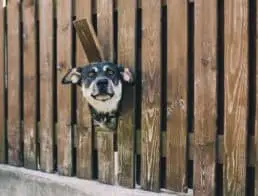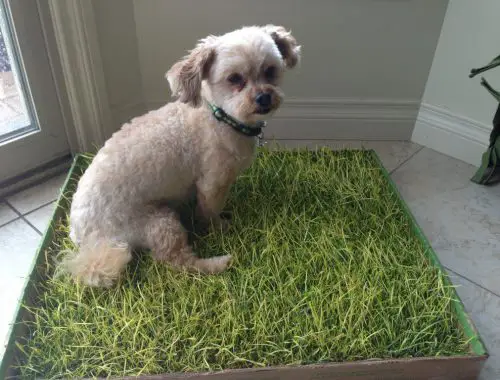Maintain your dog’s oral health to prevent periodontal disease. It is irreversible; however, it is preventable. By brushing your dog’s teeth and seeing a veterinarian for annual checkups, it ensures that your dog’s teeth and gums are healthy,.
Importance of Brushing
According to the American Society for the Prevention of Cruelty to Animals, ASPCA, veterinarians reported that 85 percent of dogs, who were over the age of five, had periodontal disease. Bacteria grows along the gum line due to leftover food particles, which causes plaque.
The soft and sticky substance that accumulates at the base of the gums is plaque. Regular brushing removes it; however, without proper oral care that includes consistent brushing, the plaque will harden which becomes tartar. Eventually, the inflamed gums that comes from tartar buildup causes the gums to separate from the teeth and form pockets that collect the bacteria. This is painful and there is a possibility of loose teeth and tooth loss. At this stage of the disease, treatment is crucial because an infection could spread to the kidneys, heart, or brain through the bloodstream.
It is best to stick to a daily brushing schedule, if this is not possible, try for several times a week. The most important thing is consistency. Breeds like bulldogs and pugs with short or flat, broad snouts and smaller dogs need more frequent brushing. Because their teeth are generally closer together with more surface area, this allows more plaque to form, which makes them more at risk for periodontal disease. Once you establish the habit, your dog will enjoy having his teeth cleaned.
Brushing does not take a lot of time, but make sure you get these dog products for good oral care.
– Toothbrush
– Toothpaste
– Hard treats
– Chew toys
Toothbrush For Dogs
Do not use a human toothbrush because it is not for use in a dog’s mouth. You can buy a dog toothbrush, dental sponge, or a finger brush from a pet store or ask your veterinarian for a recommendation. Toothbrushes come in different sizes, and you should check the back of the package for guidance. You can use a clean piece of gauze wrapped around your finger if you do not have a toothbrush.
Toothpaste For Dogs
Buy dog toothpaste which is specifically for dogs. The ingredients in human toothpaste tend to upset a dog’s stomach, and while brushing, they will swallow a lot of toothpaste. Additionally, there are flavors that will appeal to dog palettes such as liver and chicken. Before you invest in a particular flavor or brand, get several samples.
Preparation Before Brushing Your Dog’s Teeth
The two things that will make brushing your dog’s teeth a more pleasant experience for both of you are patience and making it a positive experience. It will take time before your dog is comfortable with the feeling of a finger or toothbrush.
Treats make the experience positive and take away any negative associations with tooth brushing. Start by inserting a finger dipped in something your dog likes such as chicken stock or peanut butter. For the next two to three days, gently rub the gums and teeth for a few seconds at a time. Occasionally, use a little toothpaste so your dog gets used to the smell and taste of it. Dog toothpaste comes in a variety of flavors and by different companies, so do not get discouraged if your dog does not like the first few you try. To see if your dog dislikes the taste of the toothpaste or if it is a problem with something in his mouth, try this simple test. If your dog allows you to put your finger or toothbrush in his mouth, but seems to pull back when you use toothpaste, the toothpaste is probably the problem. In that case, try another flavor or another brand.
Steps to Brushing Your Dog’s Teeth
Once your dog is comfortable with a toothbrush and toothpaste, it is time to graduate to the next step. Begin by placing one hand under your dog’s chin and put the other hand over the top of his muzzle for a few seconds and then release. Do not open your dog’s mouth, but give him a treat instead. Repeat this step about 10 times for every session and do this several times a day. This will take about two to three days.
For the next two to three days, open your dog’s lips exposing his teeth for a few seconds. Again, follow the same times in the previous step. Immediately give a treat after each session and praise him.
Increase the time you look at your dog’s teeth until he allows you to hold his mouth open for 10 seconds. Complete this step over the next week. Take care not to open your dog’s mouth so wide that it causes pain or discomfort.
Now, try a small amount of toothpaste on a toothbrush. Make the first few sessions no longer than three seconds until you are able to brush all of your dog’s teeth in one sitting. Sometimes, making progress is not as straight forward, and going back a step does not mean you are not moving forward. Patience, consistency, and persistence will pay off in the end.
Tips on How to Brush Your Dog’s Teeth
Set aside enough time and find a quiet place so you and your dog are calm and relaxed.
Mix canned dog food with hard kibble to help remove plaque. Be sure your dog has hard edible treats such as natural bones or rawhide. Giving your dog chew toys will also reduce plaque buildup. Monitor your dog with a new chew toy. Call your veterinarian immediately if your dog swallows any part of the toy.
While it is true that dogs over six or seven years old are prone to periodontal disease, have your puppy’s teeth and gums checked during annual veterinarian checkups. Early intervention is the best prevention. Taking care of your puppy’s teeth now will mean healthy teeth and gums for life.






